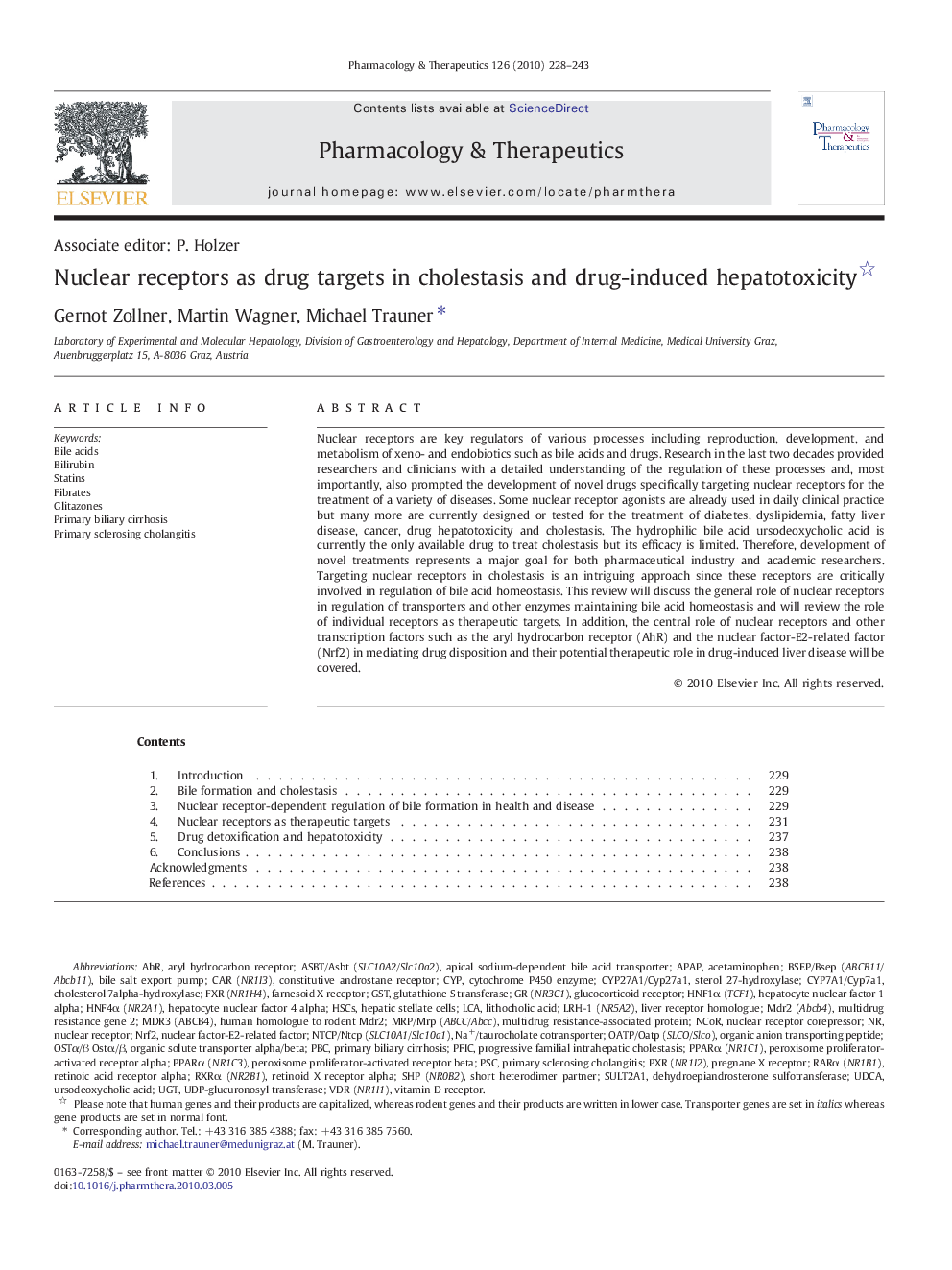| Article ID | Journal | Published Year | Pages | File Type |
|---|---|---|---|---|
| 2563890 | Pharmacology & Therapeutics | 2010 | 16 Pages |
Nuclear receptors are key regulators of various processes including reproduction, development, and metabolism of xeno- and endobiotics such as bile acids and drugs. Research in the last two decades provided researchers and clinicians with a detailed understanding of the regulation of these processes and, most importantly, also prompted the development of novel drugs specifically targeting nuclear receptors for the treatment of a variety of diseases. Some nuclear receptor agonists are already used in daily clinical practice but many more are currently designed or tested for the treatment of diabetes, dyslipidemia, fatty liver disease, cancer, drug hepatotoxicity and cholestasis. The hydrophilic bile acid ursodeoxycholic acid is currently the only available drug to treat cholestasis but its efficacy is limited. Therefore, development of novel treatments represents a major goal for both pharmaceutical industry and academic researchers. Targeting nuclear receptors in cholestasis is an intriguing approach since these receptors are critically involved in regulation of bile acid homeostasis. This review will discuss the general role of nuclear receptors in regulation of transporters and other enzymes maintaining bile acid homeostasis and will review the role of individual receptors as therapeutic targets. In addition, the central role of nuclear receptors and other transcription factors such as the aryl hydrocarbon receptor (AhR) and the nuclear factor-E2-related factor (Nrf2) in mediating drug disposition and their potential therapeutic role in drug-induced liver disease will be covered.
